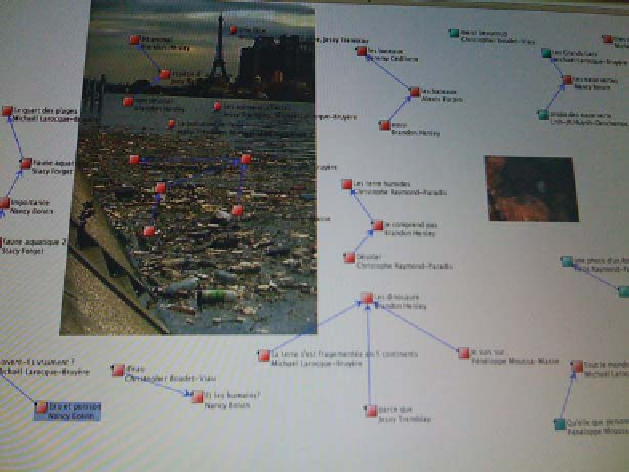Information Technology Reference
In-Depth Information
Fig. 24.2
Exemplar of a view developed by an emerging knowledge-building community
Data Analysis
To observe the presence of the IRFI pattern we focused on questions and expla-
nations. For the analysis of questions asked, we used Hmelo-Silver and Barrows'
(2008) grid, one developed for the study of groups engaged in collaborative
problem-based learning
1
; Their grid distinguishes between questions that are task-
oriented/meta level questions (group dynamics, monitoring, self-directed learning,
need clarification, request/directive), short-answer questions (verification, disjunc-
tive, concept completion, feature specification, and quantification), and long-answer
questions (definition, example, comparison, interpretation, causal antecedent, causal
consequence, enablement, expectation, and judgmental). Questions asked by teach-
ers or students were distinguished.
1
Scardamalia and Bereiter (2006) distinguish knowledge building from problem solving in that
knowledge building focuses on complex generalizable problems and problem-based learning is
context specific. However, Hmelo-Silver and Barrow's grid is applied to the resolution of complex
problems, and was thought to be suitable for the task-at-hand.

